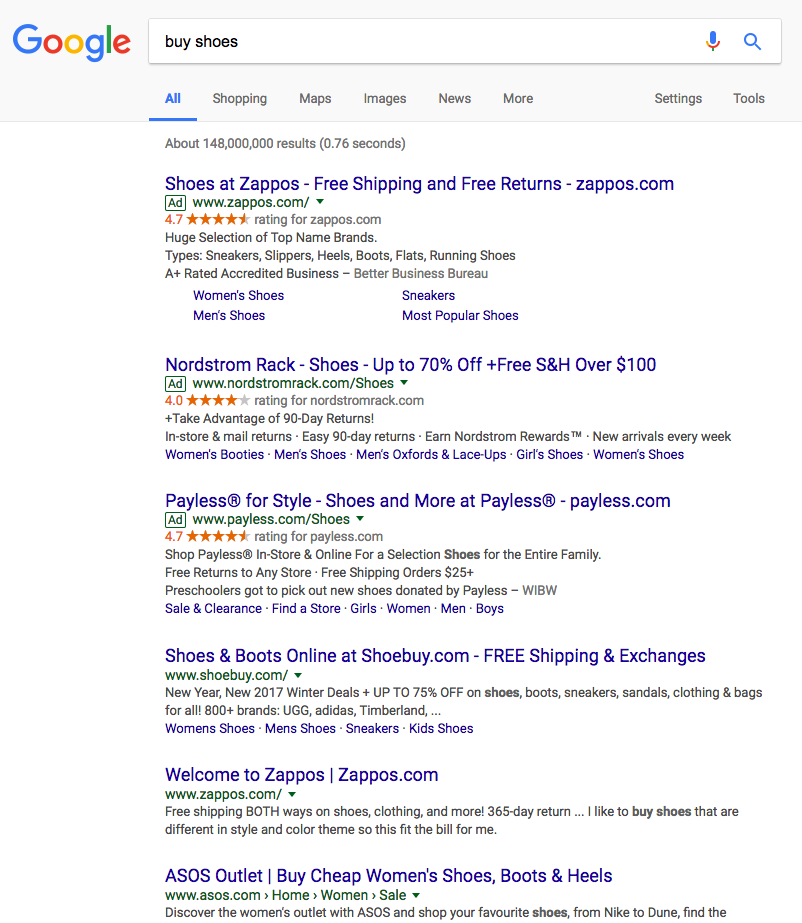When is it Smart to use Google Pay-Per-Click (PPC) Advertising?
As a marketing agency, we are often asked, “Is Google Pay-Per-Click an effective strategy for my business?” In many cases, it proves to be a highly optimizable and effective advertising tactic. But if your campaign strategy is not properly developed or managed consistently, it can consume your marketing budget quickly.
Google Pay-Per-Click Overview

At its most basic level, advertisers can create digital search and display ads, identify what geographic areas they would like to target, identify the keywords or search terms they’d like their ads to display for, and set a keyword bid price. Once an ad campaign is live, the advertiser pays Google each time a person clicks on their ad. So, rather than traditional print advertising, where you pay per impression, with pay-per-click, you only pay your set bid price if your ad is clicked on.
Pay-per-click advertising’s greatest strength is that it offers advertisers the opportunity to put relevant ads in front of motivated customers at the precise moment they are ready to make a purchase. Not many other advertising mediums can do this, which is why search engine marketing can be extremely effective and an amazingly powerful revenue generator.
Some advantages that Google Pay-Per-Click can offer your business:
1. Get Measurable Results
One of the main advantages of using pay-per-click advertising is that all campaign results are tracked and measured. Think of this tactic as more of a science than an art. Once you can identify your average cost-per-click and how many of those clicks turn into conversions that enter your sales funnel, you can calculate your cost-per-conversion ratio. Armed with this information, it’s relatively easy to see how much it costs to generate a lead and make the sale.
2. Show Your Ads to Customers Who Have Already Visited Your Site
As consumers, we’ve all experienced these ads. You visit a site to look at shoes, and the next thing you know, shoe ads are following you around the internet. This strategy is known as “Remarketing.” Google allows advertisers to track when people leave their site without purchasing or filling out a contact form. Remarketing then displays relevant ads to those consumers who have already shown interest in certain products or services. These ads are displayed for audiences across many different websites, platforms, and devices. Learn more about Remarketing.
3. Reach Your Local Customers
Why waste ad dollars on customers who aren’t in your area? One of the main advantages of pay-per-click is that it allows advertisers to target customers reliably based on their location (i.e., city, region, or postal code). Therefore, companies that do a significant amount of business within a specific region can target locations within that specified area. Radius targeting is another method that allows ads to display for people within a certain distance from the business’ location.
4. Advertising Flexibility
Another advantage of digital advertising platforms like pay-per-click is the ability to turn campaigns on and off with the click of a button. Whether the budget is reaching its limit, bandwidth is spread too thin, or you only want to advertise at certain times/days of the week, pay-per-click is extremely flexible. Ad campaigns or ad groups can be paused or resumed at any point in time.
5. Maintenance & Monitoring
The final and most important aspect to consider when determining if pay-per-click is right for your business is the need for ongoing, consistent maintenance. Not every campaign or ad group is set up perfectly on the first try. It takes hours of honing in on relevant keywords, audiences, and locations. On a weekly or even daily basis, advertisers should be monitoring and adjusting keywords to ensure they are providing the most relevant clicks possible, researching which search terms are triggering ad sets, and auditing which ads are performing the best and eliciting conversions. Without consistent maintenance and management of ad campaigns, pay-per-click can quickly consume a marketing budget without providing the results necessary to justify the investment.
Pay-per-click has become an increasingly popular online search engine marketing tool that can be used to attract high-quality leads, engage customers, and increase online visitors to your website. Have questions about Google Ads or Pay-Per-Click strategy? Contact us (& start optimizing your results today)!



